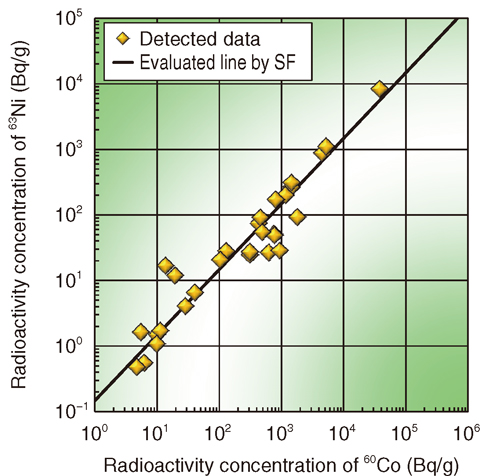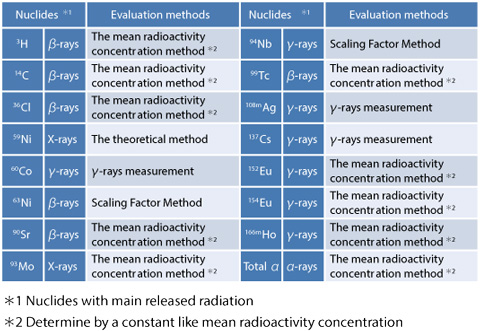
Fig.8-11 Application example of the SF method for 63Ni
Table 8-1 Evaluation methods for radioactive wastes generated from JPDR dismantling

We are planning to establish a business for the disposal of radioactive wastes generated from research, industrial, and medical facilities. Before radioactive wastes can be disposed, the radioactivity concentrations in these wastes must be confirmed to be less than the acceptance criteria for some important radioactive nuclides. However, because α- or β-ray-emitting nuclides are difficult to measure (DTM) from outside of radioactive waste packages, a great deal of effort is placed upon radiochemical analysis of waste samples because of chemical treatments like dissolving waste samples in acid before measurement.
In the case of radioactive nuclides with same production mechanism and transport behavior in a nuclear reactor, the radioactive concentrations among these radioactive nuclides are expected to correlate with each other. The scaling factor (SF) method is a technique for evaluating the radioactivity concentrations of DTM nuclides using the ratios of radioactivity concentrations between DTM nuclides and γ-ray emitting nuclides such as Cobalt-60 (60Co) or Cesium-137 (137Cs), which are measurable from outside of radioactive waste packages. Therefore, applications of the SF or other methods have been studied for 16 important nuclides such as Tritium (3H), Carbon-14 (14C), and Nickel-63 (63Ni) (which were selected based on the safety assessment of the disposal facility) in radioactive metal wastes generated from the dismantling of the Japan Power Demonstration Reactor (JPDR), because a large amount of these wastes are stored in the Nuclear Science Research Institute. In this study, an example of the application of the SF method for 63Ni has been described.
Combination of the radioactive nuclides under consideration was the focus of the study on the applications of the SF method. Radioactive nuclides are produced by neutron activation of corrosion products, which are transported through the reactor core, and the products of nuclear fission. 63Ni and 60Co are produced by neutron activation, and the transport behavior of 63Ni is similar to that of 60Co because they have the same physicochemical characteristics in the reactor cooling water. From the results of the radiochemical analysis of metal wastes, a good correlation between the radioactivity concentration of 63Ni and that of 60Co was confirmed (Fig.8-11). Therefore, it was found that the SF method can be applied for 63Ni.
On the other hand, because the transport behaviors of volatile DTM nuclides such as 3H or 14C are not similar to those of 60Co or 137Cs, the SF method cannot be applied to them. For these kinds of DTM nuclides, other evaluation methods were applied to determine their concentrations from the mean radioactivity concentrations. Similarly, no detected nuclides were applied to determine their concentrations from the mean detection limits of a detector.
From these results, appropriate evaluation methods for 16 radioactive nuclides in metal wastes generated from JPDR dismantling were established as a combination of the SF, the mean activity concentration, and the theoretical methods (Table 8-1). Based on this result, studies of evaluation methods are planned for radioactive wastes generated from other research reactors.